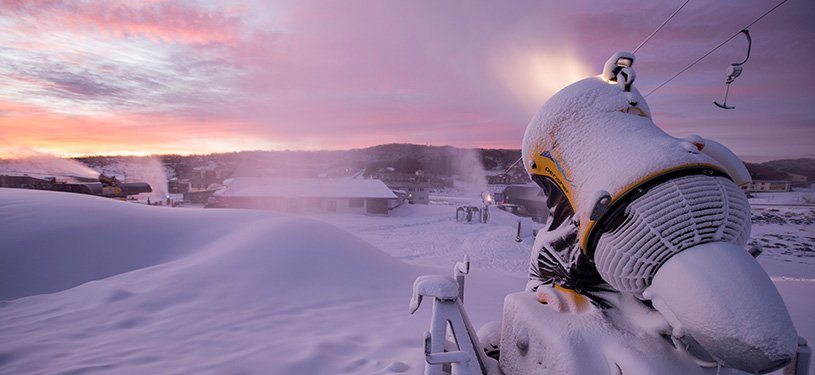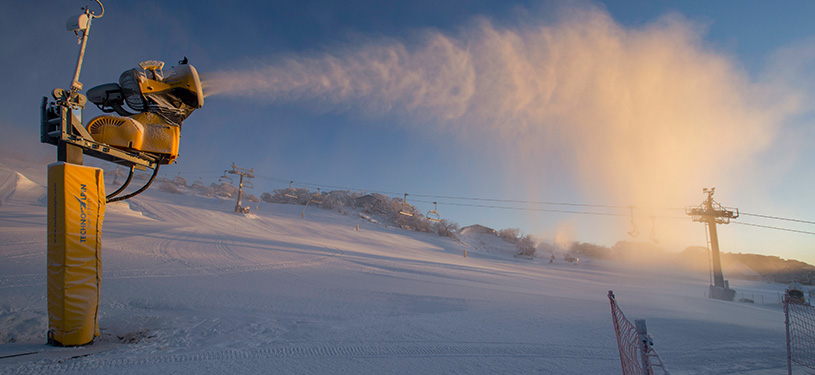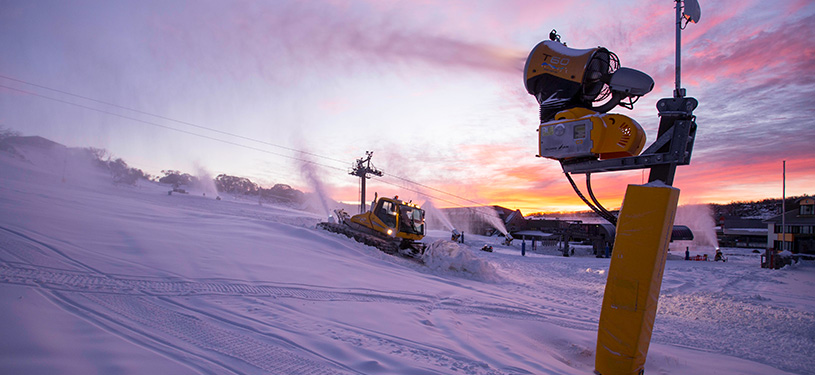
As the sun goes down and we all head home at the end of a day, the Ghosts of Perisher get ready to start their day. It’s a job like no other, so we went into magical world of snowmaking to see what’s really involved and what happens.
We caught up with John Palmer, Perisher’s Snowmaking Manager, to get an insight into behind the scenes of snowmaking.
What’s your average day like?
It varies from day to day. The Perisher snowmaking team can start their working day around 5pm and go through until after midnight, and then the night owls can start anytime from midnight onwards.
Our snowmaking covers 53.4 hectares across the resort, so we can see some of the most incredible views as the sun rises and sets each day.
There are different kinds of snow.
You may not have known, but snow is crystallized ice particles having the physical integrity and the strength to maintain their shape. Given cold atmospheric conditions the raindrop freezes and forms an ice crystal with six tiny arms (called dendrites). This is how the classic snowflake is formed.
Our snowmakers check the quality of the snow they are making by scooping up a handful of snow in there hand and make a snowball from it.
- Wet snow makes a heavy snowball (500 kg water to a cubic metre of snow).
- Medium snow makes a white snowball when broken open (400 kg water to a cubic metre of snow).
- Dry snow is hard to make a snowball with as it fall apart easily (300kg per cubic metre).

How do you actually make snow?
Simply put, snowmaking replicates nature by converting water into snow. Snowmaking requires a significant level of infrastructure including water storages, pump stations, compressors, pipes, electricity supply, hydrants and weather stations.
Snowmaking ‘borrows’ water from the catchment and then eventually returns it. The majority of the water used for Perisher's snowmaking comes from a Snowy Hydro aqueduct. About 93% of the water used for the snowmaking is returned to the streams in the spring thaw starting in September. In many ways snowmaking stores water for the winter and returns it to the streams in the spring.
Perisher’s Snowmaking.
In total, we have 236 snow-guns in the snowmaking inventory which can allow Perisher to produce snow across Front Valley, Smiggin Holes and Blue Cow.
Perisher has invested heavily in snowmaking to ensure guests are provided with the best possible conditions all winter. Since 2007, Perisher has spent over $22 million on improving and expanding the resort's snowmaking system, including the installation of new automated, energy efficient snow-guns.

